CLIMATE CAPITAL
Explainer: Why Kenya is Considered a High Climate Risk for Development Bank
Kenya’s latest climate risk profile presents a summary of climatic trends over two decades, from 1991 to 2020. It reveals that approximately 68 percent of natural disasters in the country are attributed to extreme climatic events, primarily floods and droughts, while the remaining 32 percent is linked to disease epidemics.

NAIROBI, Aug 07 (IPS) – Climate change-related extreme weather jeopardizes Kenya’s development agenda; even though it contributes very little to global warming, it is marked as a high-risk country by development banks.Kenya contributes less than 0.1 percent of global greenhouse gas emissions every year, yet development banks have flagged the East African nation as a high climate risk. This is due to extreme weather changes that are increasingly threatening the country’s development agenda, widening socio-economic inequalities, and deepening rural poverty and hunger.
Climate change is a long-term shift in temperatures and weather patterns. Climate risk is the potential harm caused by climate change, such as financial, social, and environmental destruction and loss of life. Country-specific climate risk profiles are a summary of an analysis of climate trends over a long period of time, revealing how variability in weather patterns affects life and livelihoods.
Countries are advised to use these profiles to inform their development agenda, as failure to do so can significantly derail achievement of set development goals. For instance, unpredictability in weather patterns has a negative impact on certain sectors of Kenya’s economy.
This includes agriculture, tourism, horticulture, livestock and pastoralism, and forest products. Nearly 98 percent of agriculture is rain fed. Using climate risk projections, the country can invest in irrigation to reduce the impact of climate change on the sector, as approximately 75 percent of Kenyans draw their livelihood from agriculture.
Kenya’s most recent climate risk profile provides a climatic trend summary spanning two decades from 1991 to 2020, revealing that an estimated 68 percent of natural disasters in Kenya are caused by extreme climatic events, mostly floods and droughts. The remaining 32 percent represents disease epidemic.

High Temperatures Causing Frequent, Intense Droughts
Overall, 16 drought events are on record from 1991 to 2020, affecting millions of people and causing an overall estimated damage of USD 1.5 billion. Despite floods being a more recent phenomenon in Kenya they are becoming increasingly frequent, resulting in 45 flood events within the same period. While a pattern of droughts began to emerge as far back as 1975, a pattern of floods has only begun to emerge from 2012 to 2020.
A repeating pattern of droughts and floods costs the country approximately 3 to 5 percent of its annual Gross Domestic Product. Over the past two decades, Kenya’s mean annual temperature was 24.2 degree Celsius—with a high of 30.3 degree Celsius and a low of 18.3 degree Celsius.
To give a perspective of average temperatures in Kenya, 2023 was the hottest year on record and 2024 is following the trend. According to the Gilbert Ouma Associate Professor, Meteorology, University of Nairobi writing in The Conversation the capital Nairobi average temperatures fare normally moderate, between 24°C and 25°C on the higher side and 17°C-18°C on the lower side.
“These are generally very comfortable temperatures. However, in the December-January-February period, maximum temperatures are normally high, ranging between 26°C and 27°C.
“This year, temperatures in February went up to between 29°C and 30°C, even hitting 31°C. This is about 6°C higher than normal Nairobi temperatures. That is a big difference and our bodies are bound to feel the difference. If such an increase is sustained for a long time, it can lead to a heat wave.”
Droughts have been a most pressing and persistent problem in Kenya. As far back as 1975, drought cycles used to occur every 10 years. But as climate change escalates in both frequency and intensity, the drought cycle reduced from every 10 years to every five years, to every two to three years.
Each year there is an annual dry spell and a food shortage and the regularity of extremely dry periods makes it difficult for the country to recover from one drought to the next.

A History of Drought Cycles in Kenya From 1991 to 2020
Drought is a regular occurrence in Kenya. In 1991–1992, more than 1.5 million people were affected by drought. This was followed by another cycle of widespread drought in 1995–1996 that affected at least 1.4 million people.
In January 1997, the government declared drought a national disaster, affecting more than two million people, and the famine continued into 1998. Shortly after, in 1999–2000, an estimated 4.4 million people were in dire need of food aid due to a severe famine. As far as natural disasters go, this was declared the worst in the preceding 37 years.
The 1998–2000 drought cost the country an estimated USD 2.8 billion, and this was largely due to crops and livestock loss, forest fires, damage to fisheries, reduced hydropower generation, reduced industrial production and reduced water supplies.
In 2004, failure of the March to June long rains led to a severe drought that left more than three million Kenyans in need of urgent food aid. In December 2005, the government declared drought a national catastrophe, affecting at least 2.5 million people in northern Kenya alone.
The drought in 2008 affected 1.4 million people and an overall 10 million people were at risk of hunger after an unsuccessful harvest due to drought in late 2009 and into early 2010. The severe and prolonged drought caused the country USD 12.1 billion in damages and losses, and cost over USD 1.7 billion in recovery.
There are 47 counties in Kenya. As only 20 percent of Kenya receives high and regular rainfall, Kenya’s arid and semi-arid (ASAL) areas comprise 18 to 20 of the poorest counties, which are particularly at risk from increased aridity and periods of drought.
ASAL regions have endured three significantly severe droughts from 2010 to 2020. The 2010–2011 period was severe and prolonged, affecting at least 3.7 million people, causing USD 12.1 billion in damages and losses, and costing over USD 1.7 billion in recovery and reconstruction needs.
That cycle was followed by the 2016–2017 drought. The 2020–2022 famine, which was the most severe, longest and widespread as more than 4.2 million people, or 24 percent of the ASAL population were facing high levels of acute food insecurity.

Overview of Natural Disaster Events in Kenya, 1991–2020
Kenya is increasingly enduring periods of intense, heavy rainfall. During this period, there were a total of 45 flood events, directly affecting more than 2.5 million people and causing an estimated damage of USD 137 million. These events took place in 1997, 1998, 2002, 2012 and 2020, as they were short, frequent and intense.
Unlike drought and famine, Kenya’s history with floods is much shorter. There were many consecutive drought seasons from 1991 to 1997. From 1997, a pattern of floods begun to emerge in this East African country.
It all started with the historic severe and deadly El Nino floods in 1997–1998 that were widespread and affected 1.5 million people. This was followed by the 2002 floods, that affected 150,000 people. Kenya has experienced flooding almost every year from 2010 to 2020.

Projected Risk Moving Forward
“From 2020 to 2050, projections show that ASAL regions will continue to receive decreasing rainfall. Temperatures in the country will continue to rise by 1.7 degree Celsius by 2050 and even higher by approximately 3.5 degree Celsius before the end of this century. The escalation in climate change will increase our climate risk,” Mildred Nthiga, a climate change independent researcher in East Africa, tells IPS.
“We will have even more frequent and damaging floods, and this will be followed by longer periods of drought. We have already started to experience some worrisome landslides and mudslides and, this will become an even bigger concern, especially in the highlands.”
Stressing that additional soil erosion and water logging of crops will significantly affect agricultural productivity, reducing yields and increasing food security. There will also be significant economic losses, severe damage to farmlands and infrastructure.
Worse still, as already witnessed in the recent 2024 deadly floods—human causalities. This will deepen rural poverty and hunger, and derail Kenya’s progress towards achieving the UN’s Sustainable Development Goals.
Note: This feature is published with the support of Open Society Foundations.
IPS UN Bureau Report
CLIMATE CAPITAL
Access Bank Secures CAK Approval for National Bank Acquisition
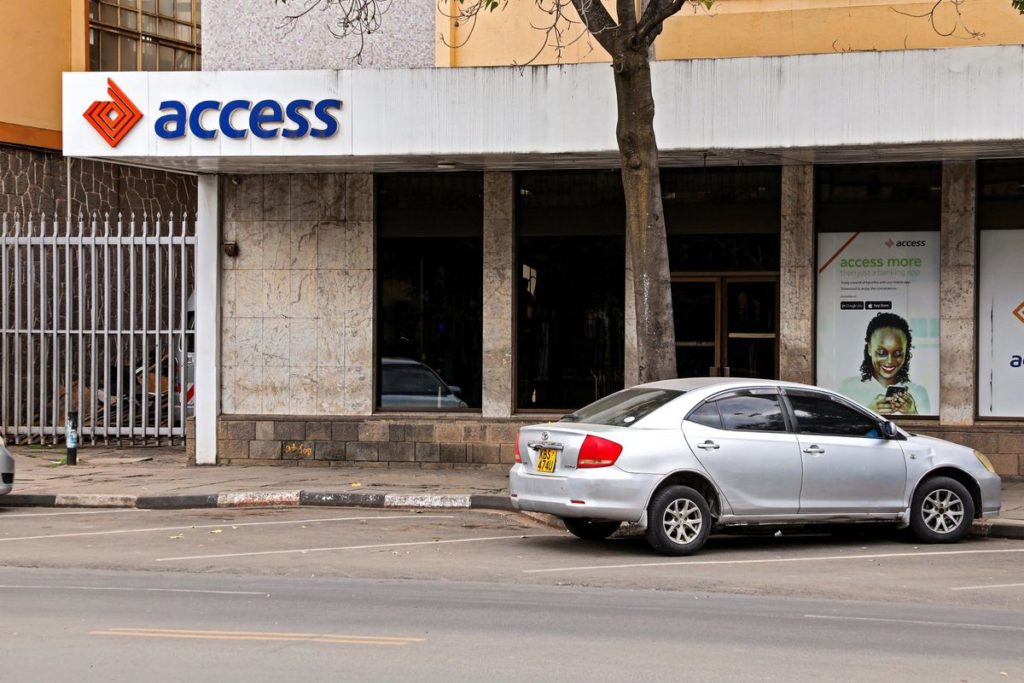
: Access Bank to acquire National Bank of Kenya for $100M, boosting market
share to 1.9% with CAK approval and workforce retention conditions.
CAK Approves Access Bank’s Acquisition of NBK with Conditions
The Competition Authority of Kenya (CAK) approved Access Bank’s acquisition of the
National Bank of Kenya (NBK) from KCB Group, requiring Access Bank to retain 80% of
NBK’s workforce for at least one year.
The Central Bank of Kenya (CBK) must now give its final approval for the deal.
Employment Retention Key to Approval
According to CAK, Access Bank must maintain 80% of NBK’s 1,384 employees and all
316 staff from its local subsidiary, Access Bank Kenya, for a year following the
transaction’s completion. “The transaction has been approved on condition that Access
Bank Plc retains, for one year, at least 80% of the target’s current workforce,” CAK
stated.
Deal Valuation and Finalization Timeline
While the deal’s value has not been disclosed, KCB Group announced in March 2024
that NBK would be sold for 1.25 times its book value. With NBK’s 2023 book value at
$79.77 million, the acquisition is estimated to be worth approximately $100 million. The
transaction is expected to conclude in November.
Expanding Access Bank’s Kenyan Presence
Access Bank’s current footprint in Kenya includes 23 branches in 12 counties. Acquiring
NBK’s 77 branches across 28 counties will significantly boost its presence and service
offerings, including retail, corporate, and Islamic banking. Access Bank, currently
ranked as a tier 3 lender, will integrate with NBK, a tier 2 institution, enhancing its status
in the market.
Market Share and Competition Analysis
The acquisition will give the merged entity a 1.9% market share in Kenya’s banking
sector. “The combined market size is unlikely to raise competition concerns since it is
low,” CAK noted. “The merged entity will face competition from other banks in the
market. Based on this, the transaction is unlikely to substantially lessen or prevent
competition.”
CLIMATE CAPITAL
Patricia Ithau: CEO of WPP-Scangroup, Leading Africa’s Marketing Giant

: She leads WPP-Scangroup PLC, the largest marketing and communication group in sub-Saharan Africa, driving innovation, business growth, and social impact across the region.
Patricia Ithau leads WPP-Scangroup PLC, the largest marketing and communication group in sub-Saharan Africa. She took over as CEO on March 14, 2022, succeeding Bharat Thakrar at the helm of this Nairobi Securities Exchange-listed company.
Under her visionary leadership, WPP-Scangroup continues to redefine the marketing and advertising landscape in East Africa through a multi-agency, multi-disciplinary approach.
Her focus on pushing the boundaries of creativity and innovation has positioned the company to drive growth and deliver groundbreaking solutions across the region.
Early Life and Academic Foundation
Patricia’s leadership journey grew from a strong academic foundation.
Patricia Ithau studied at Loreto Convent Msongari in Nairobi before earning her Bachelor of Commerce degree from the University of Nairobi.
Further expanding her knowledge, she earned an MBA in Strategic Management from the United States International University-Africa.
She also completed advanced management programs at prestigious institutions like Strathmore University, IESE Business School, INSEAD, and Oxford University, laying the foundation for a distinguished career in business leadership.
Career Milestones: L’Oréal Africa and Beyond
Before joining WPP-Scangroup, Patricia was the founding CEO of L’Oréal Africa, where she significantly drove the company’s growth and success in the region.
Under her leadership, L’Oréal’s African subsidiary generated $25 million in annual revenue, employed over 270 people, and produced 40 million units annually.
One of her key achievements was leading one of the first acquisitions of a local business by a multinational in East Africa, demonstrating her ability to drive growth and market penetration in the competitive FMCG sector.
Advocacy for Women in Leadership
Patricia has actively championed women in leadership, advocating for creating opportunities that allow women to thrive in the corporate world.
As an Ambassador for the Women on Boards Network (WOBN) in Kenya, she has worked to elevate women into leadership positions.
She holds board positions at organisations such as ABSA Bank Kenya, Jambojet Ltd, Vivo Fashion Group, and the British Chamber of Commerce.
Furthermore, Patricia actively supports corporate governance and social impact as a Trustee for the Vodafone Foundation (UK) and the M-PESA Foundation.
Overcoming Personal Challenges and Building Resilience
In addition to her professional achievements, Patricia’s journey has been marked by resilience.
She was crowned Miss Kenya in 1986 during her first year at the University of Nairobi.
Navigating societal judgments and stereotypes during this period helped shape her leadership abilities, teaching her invaluable lessons in self-confidence and perseverance.
Recognition and Awards
Patricia’s contributions to Kenya’s economic growth and development have not gone unnoticed.
In 2020, she was awarded the Head of State Commendation (HSC) for her outstanding role in business development.
Patricia is also an accredited executive coach and certified Emotional Intelligence practitioner, emphasising her commitment to fostering future leaders who embrace emotional intelligence and holistic leadership practices.
Corporate and Social Impact
Patricia’s leadership extends beyond the corporate world.
As East Africa Regional Director for the Stanford Institute for Innovation in Development Economies (SEED), Patricia has driven sustainable business growth and job creation across sub-Saharan Africa.
Through SEED, she has supported over 200 businesses in tackling leadership challenges and fostering innovation, contributing significantly to the region’s economic transformation.
Family and Personal Values
Patricia is also deeply committed to her family.
She proudly raises her two daughters, Mueni and Makena, instilling in them the values of hard work and resilience.
Her role as a mother aligns with her broader mission of mentoring and guiding the next generation of leaders.
Conclusion: A Legacy of Leadership and Innovation
Patricia Ithau leads with vision, innovation, and a strong commitment to social sustainability, from her strategic achievements at L’Oréal Africa to her current role as CEO of WPP-Scangroup.
Her dedication to advancing women in leadership, her contributions to the business community, and her efforts in developing future leaders make her a lasting influence on Africa’s corporate sector, inspiring and driving progress across the region.
CLIMATE CAPITAL
Meet Kariuki Ngari: Standard Chartered Bank’s new CEO of Africa. What’s Next?
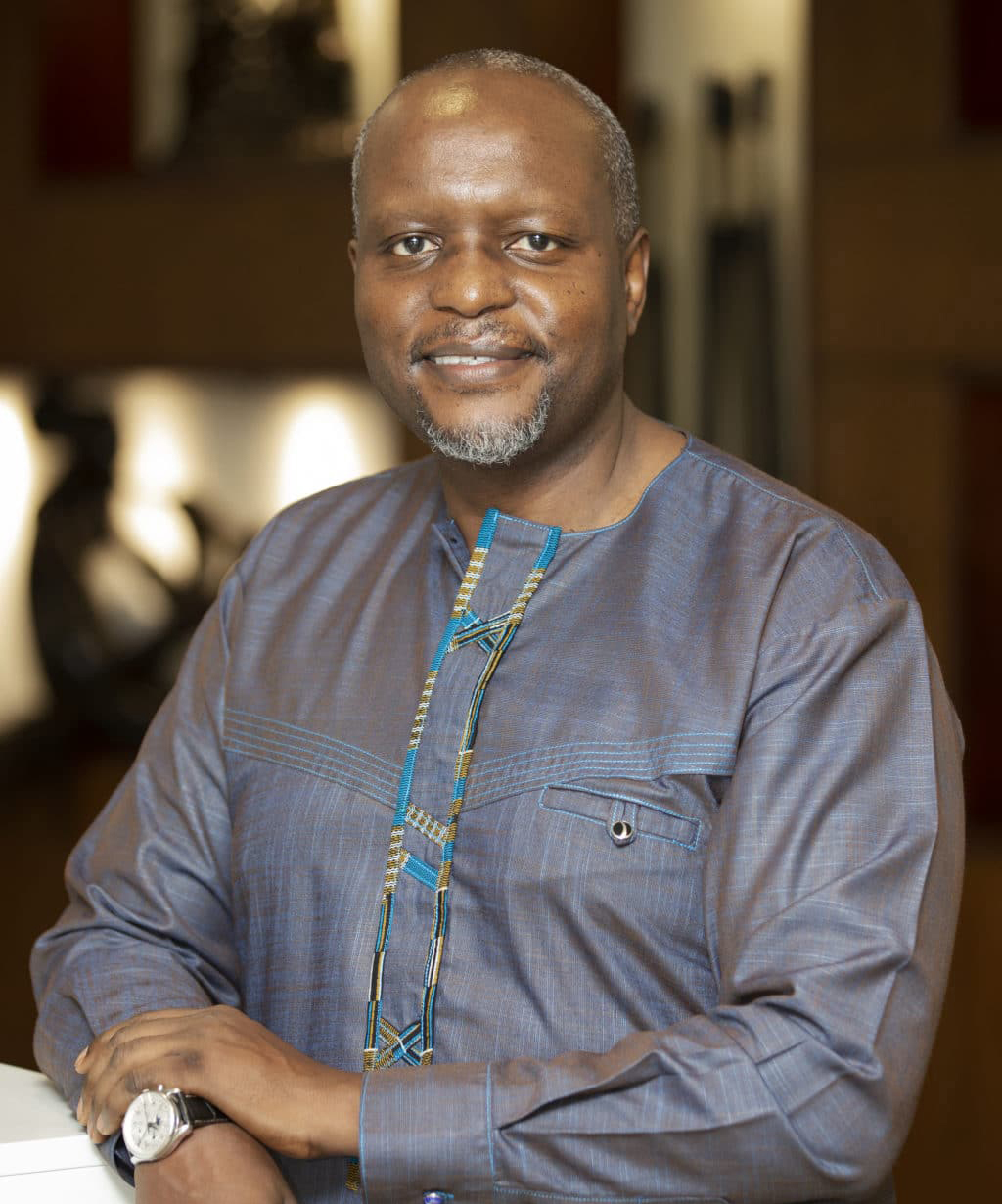
: The nomination speaks volumes about the bank’s commitment to its African operations and its strategic vision for growth on the continent.
: Kariuki’s vast experience and market insight make him a catalyst for growth. With his strategic vision, Standard Chartered can seize opportunities, expand, and provide tailored financial solutions
In a significant move within the banking sector, Kariuki Ngari ascended to CEO Africa at Standard Chartered Bank on April 3, marking a pivotal moment in his illustrious career. As he steps into this new role, Ngari faces a landscape rife with challenges but brimming with opportunities. He is poised to leverage his expertise and track record to propel the bank’s growth trajectory across Africa.
Challenges and Opportunities:
Navigating Regulatory Complexity: One of Kariuki’s foremost challenges will be navigating the diverse regulatory environments across the African continent. With each country presenting unique regulations and compliance requirements, Ngari must adopt a nuanced approach to ensure Standard Chartered Bank’s operations remain compliant while driving growth.
Adapting to Market Dynamics: African markets are diverse and constantly changing. Rapid shifts in consumer preferences, technological advancements, and intense competition characterise them. Kariuki must stay agile and adaptive, seizing opportunities for innovation and market expansion while mitigating risks associated with changing market dynamics.
Fostering Financial Inclusion: Africa offers significant opportunities for financial inclusion, as a large portion of the population remains underserved by traditional banking services. Kariuki has the opportunity to drive initiatives that promote financial literacy, expand access to banking services, and foster inclusive economic growth across the continent.
Previous Achievements and Experience:
Before assuming the role of CEO of Africa, Kariuki served in various leadership positions within Standard Chartered Bank, demonstrating his exceptional leadership capabilities and strategic vision. Some of his notable achievements include:
Driving Digital Transformation: Kariuki played a pivotal role in driving Standard Chartered Bank’s digital transformation agenda, spearheading initiatives to enhance the bank’s digital capabilities and customer experience. Under his leadership, the bank successfully launched innovative digital banking solutions tailored to the African market, driving customer engagement and retention.
Expanding Market Presence: Kariuk has a proven track record of expanding Standard Chartered Bank’s market presence across Africa, identifying growth opportunities, and forging strategic partnerships to penetrate new markets and strengthen the bank’s foothold in existing ones.
Promoting Sustainable Finance: Kariuki is committed to promoting sustainable finance and responsible banking practices. He has championed initiatives focused on environmental, social, and governance (ESG) principles, integrating sustainability into the bank’s business strategy and operations.
Expectations in the New Role:
As CEO of Africa, stakeholders expect Kariuki to bring his wealth of experience, strategic acumen, and unwavering commitment to driving Standard Chartered Bank’s growth agenda in Africa. Key expectations include:
Strategic Vision: Kariuki will continue articulating a clear vision for Standard Chartered Bank’s African operations, leveraging market insights and industry trends to identify growth opportunities and drive sustainable value creation.
Innovation and Digitalization: Ngari will prioritise innovation and digitalisation, harnessing the power of technology to enhance the bank’s offerings, streamline operations, and deliver superior customer experiences.
Stakeholder Engagement: Ngari will intensely focus on stakeholder engagement, fostering relationships with clients, regulators, shareholders, and communities to ensure alignment with the bank’s objectives and values.
The nomination of Kariuki to the position of CEO of Standard Chartered Africa speaks volumes about the bank’s commitment to its African operations and its strategic vision for growth on the continent. Here are a few critical points that the nomination signifies:
Recognition of Talent: Standard Chartered Bank’s decision to appoint Kariuki Ngari as CEO of Africa reflects the bank’s recognition of his exceptional leadership qualities, strategic acumen, and track record of success within the organisation. It indicates that the bank values talent from within its ranks and is committed to nurturing and promoting internal talent to key leadership positions.
Focus on the African Market: By appointing a CEO specifically for the African region, Standard Chartered Bank underscores the importance of the African market in its global strategy. It signifies the bank’s commitment to unlocking the vast opportunities presented by the African continent and leveraging its potential for growth and expansion.
Continuity and Stability: Kariuki’s nomination brings continuity and stability to Standard Chartered Bank’s African operations. With his deep understanding of market dynamics, extensive experience within the organisation, and proven track record of success, Ngari is well-positioned to provide steady leadership and drive the bank’s growth agenda in Africa.
Emphasis on Local Leadership: The appointment of Kariuki, who is of Kenyan nationality, also highlights the importance of local leadership and expertise in driving success in the African market. It demonstrates Standard Chartered Bank’s commitment to fostering a diverse and inclusive leadership culture that reflects the communities and markets it serves.
Strategic Direction: Kariuki’s nomination signifies the bank’s strategic direction and priorities for its African operations. It suggests a focus on driving innovation, digital transformation, and sustainable growth in key markets across the continent, with Ngari leading the charge in executing the bank’s vision and objectives in Africa.
Kariuki’s appointment as CEO of Africa at Standard Chartered Bank marks a significant milestone in the institution’s journey towards consolidating its position as a premier financial institution on the African continent. With an unwavering focus on excellence, strategic foresight, and a proven track record of leadership, Kariuki brings a wealth of experience and expertise that positions him as a catalyst for transformative growth.
His elevation underscores the bank’s confidence in his abilities and its steadfast commitment to fostering homegrown talent and leveraging local expertise to drive success in key markets. Kariuki’s appointment represents more than just a change in leadership; it symbolises a new era of innovation, resilience, and adaptability in navigating the intricacies of the African financial landscape.
In the face of evolving market dynamics, regulatory complexities, and competitive pressures, Kariuki’s leadership will be instrumental in steering Standard Chartered Bank towards sustainable growth and value creation. His strategic vision, coupled with a deep understanding of the African market, will enable the bank to capitalise on emerging opportunities, expand its footprint, and deliver superior financial solutions tailored to the diverse needs of its customers.
Moreover, Kariuki’s appointment reinforces Standard Chartered Bank’s commitment to driving positive impact and fostering inclusive growth across the continent. Kariuki is poised to make a meaningful difference in millions of individuals and businesses across Africa by championing initiatives promoting financial inclusion, sustainability, and responsible banking practices.
In essence, Kariuki’s nomination heralds not just a new chapter but an entire volume in the bank’s narrative of success in Africa. It signifies a renewed sense of purpose, a reaffirmation of values, and a shared commitment to shaping a brighter future for the continent’s economies and communities. As he assumes the mantle of leadership, Ngari stands at the forefront of Standard Chartered Bank’s journey towards becoming the partner of choice for businesses, investors, and individuals alike, propelling Africa towards a future of prosperity and opportunity.
-

 Business & Money8 months ago
Business & Money8 months agoEquity Group Announces Kshs 15.1 Billion Dividend Amid Strong Performance
-

 Politics3 months ago
Politics3 months agoFred Okengo Matiang’i vs. President William Ruto: A 2027 Election Showdown
-
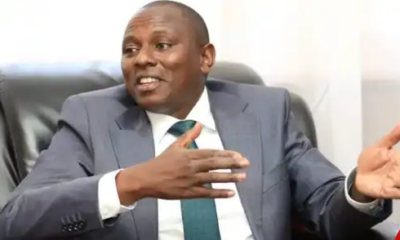
 Politics2 months ago
Politics2 months agoIchung’wah Faces Mt. Kenya Backlash Over Gachagua Impeachment Support
-
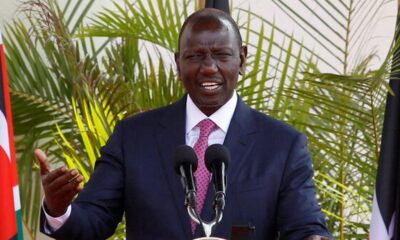
 Politics4 months ago
Politics4 months agoPresident Ruto’s Bold Cabinet Dismissal Sparks Hope for Change
-
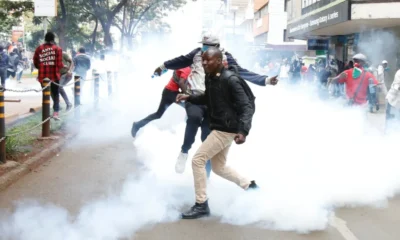
 Politics5 months ago
Politics5 months agoKenya Grapples with Investor Confidence Crisis Amid Tax Protest Fallout
-
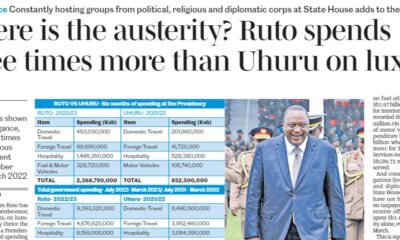
 Politics5 months ago
Politics5 months agoPresident Ruto’s Lavish Spending Amid Kenya’s Economic Struggles Sparks Outrage
-
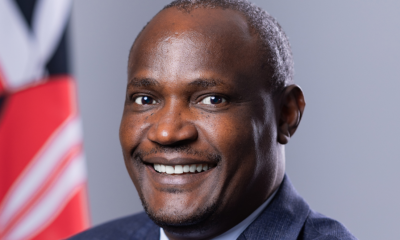
 Politics4 months ago
Politics4 months agoJohn Mbadi Takes Over Kenya’s Treasury: Challenges Ahead
-
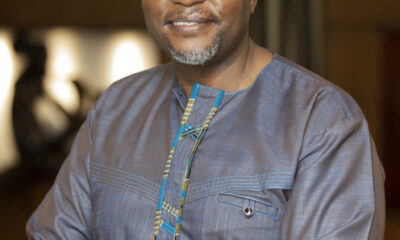
 Business & Money1 week ago
Business & Money1 week agoMeet Kariuki Ngari: Standard Chartered Bank’s new CEO of Africa. What’s Next?





